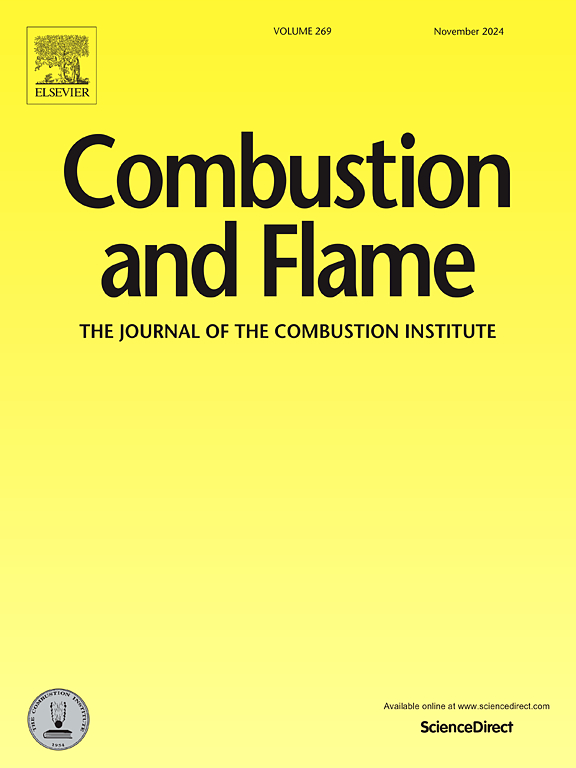A study of ammonia combustion induced by high reactivity fuel based on optical diagnostics and chemical kinetic analyses
IF 5.8
2区 工程技术
Q2 ENERGY & FUELS
引用次数: 0
Abstract
Ammonia is considered an optimal alternative fuel due to its non-emission of CO₂. However, the use of pure ammonia presents significant challenges. A dual fuel approach utilizing ammonia and high reactivity fuel (HRF) is expected to address these challenges. Nevertheless, the interaction mechanism between ammonia and HRF remains unclear. In the current study, various direct injection (DI) fuels such as n-heptane, n-dodecane, and n-dodecane mixed with 3%vol 2-ethylhexyl nitrate (EHN) were selected. Optical diagnostic methods and kinetic analyses were employed to investigate the effects of DI fuel reactivity and DI energy ratio on the dual fuel method adopting HRF and ammonia. Experimental results reveal that DI fuel reactivity and DI energy ratio determine the ability to ignite ammonia and influence flame development mode, respectively. Notably, the n-dodecane/EHN blend can operate at a 4% DI energy ratio, with a flame speed of less than 5 m/s, while at a 40% DI energy ratio, the flame speed increases to 10–15 m/s. Emissions at the 40% DI energy ratio include 4373 ppm of NO, 41.4 ppm of N₂O, 71.2 ppm of NO₂, and 6391 ppm of unburned NH₃. Reducing the DI energy ratio from 40% to 20% decreases NO and NO₂ emissions by 14.6% and 7.3%, respectively, while N₂O and unburned NH₃ emissions increase by 129.7% and 105%, respectively. Chemical kinetic analyses suggest that the active atmosphere produced by HRF has a certain impact on reducing ammonia ignition delay in the initial phase of combustion. As combustion progresses, the impacts of the HRF-induced thermal atmosphere on reducing the ammonia ignition delay become more pronounced, with ambient temperature playing a critical role. Furthermore, as the combustion process develops, the influence of ambient pressure on reducing ammonia ignition delay becomes increasingly significant.
求助全文
约1分钟内获得全文
求助全文
来源期刊

Combustion and Flame
工程技术-工程:化工
CiteScore
9.50
自引率
20.50%
发文量
631
审稿时长
3.8 months
期刊介绍:
The mission of the journal is to publish high quality work from experimental, theoretical, and computational investigations on the fundamentals of combustion phenomena and closely allied matters. While submissions in all pertinent areas are welcomed, past and recent focus of the journal has been on:
Development and validation of reaction kinetics, reduction of reaction mechanisms and modeling of combustion systems, including:
Conventional, alternative and surrogate fuels;
Pollutants;
Particulate and aerosol formation and abatement;
Heterogeneous processes.
Experimental, theoretical, and computational studies of laminar and turbulent combustion phenomena, including:
Premixed and non-premixed flames;
Ignition and extinction phenomena;
Flame propagation;
Flame structure;
Instabilities and swirl;
Flame spread;
Multi-phase reactants.
Advances in diagnostic and computational methods in combustion, including:
Measurement and simulation of scalar and vector properties;
Novel techniques;
State-of-the art applications.
Fundamental investigations of combustion technologies and systems, including:
Internal combustion engines;
Gas turbines;
Small- and large-scale stationary combustion and power generation;
Catalytic combustion;
Combustion synthesis;
Combustion under extreme conditions;
New concepts.
 求助内容:
求助内容: 应助结果提醒方式:
应助结果提醒方式:


